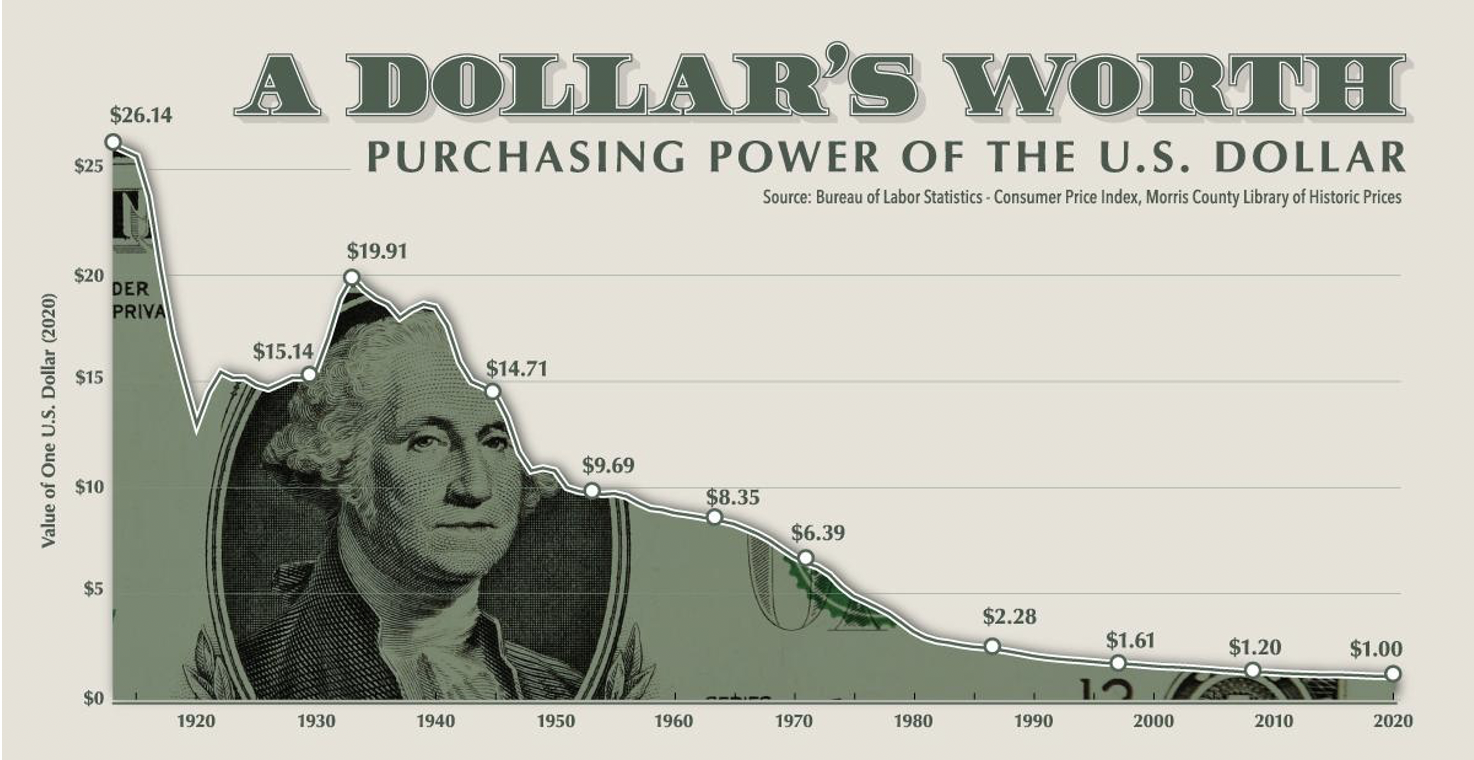Kerby Anderson
One factor that should be considered during the ongoing congressional debate about spending and raising the debt ceiling is the declining value of the dollar. Each year the dollar is losing value. Unfortunately, many Americans may think the problem with rising inflation and the decreasing value of the dollar is a recent phenomenon.
Let’s start with the standard graph using data from the Bureau of Labor Statistics. It shows the decline in the value of the dollar from the time of the Federal Reserve Act. It shows the value of the dollar then was $26.14 compared to one dollar in 2020. Put another way, the US dollar lost 96 percent of its purchasing power.
These numbers are based upon the consumer price index, which I have explained in previous commentaries, and aren’t an accurate measure of inflation. It is also reasonable to assume that the purchasing power of the dollar will be dropping even more because so much money was printed during the pandemic and lockdown.
Lest you think this is merely an economic issue, consider Isaiah 1:22 which says, “Your silver has become dross, your best wine mixed with water.” Though some only see this as a metaphor for the degeneracy of Jerusalem, I think it also implies the debasement of both currency and products. They were adding cheaper metals to their silver and adding water to their wine.
The debasement of the currency in other countries is even greater than in our own country. Americans may be losing half the purchasing power of our currency over a decade or two, but citizens in many other countries are losing half the purchasing power of their currency in a few years.
We don’t want what is happening in those countries to happen to our country. That is why these spending debates are so important.
 Listen Online
Listen Online Watch Online
Watch Online Find a Station in Your Area
Find a Station in Your Area









 Listen Now
Listen Now Watch Online
Watch Online
